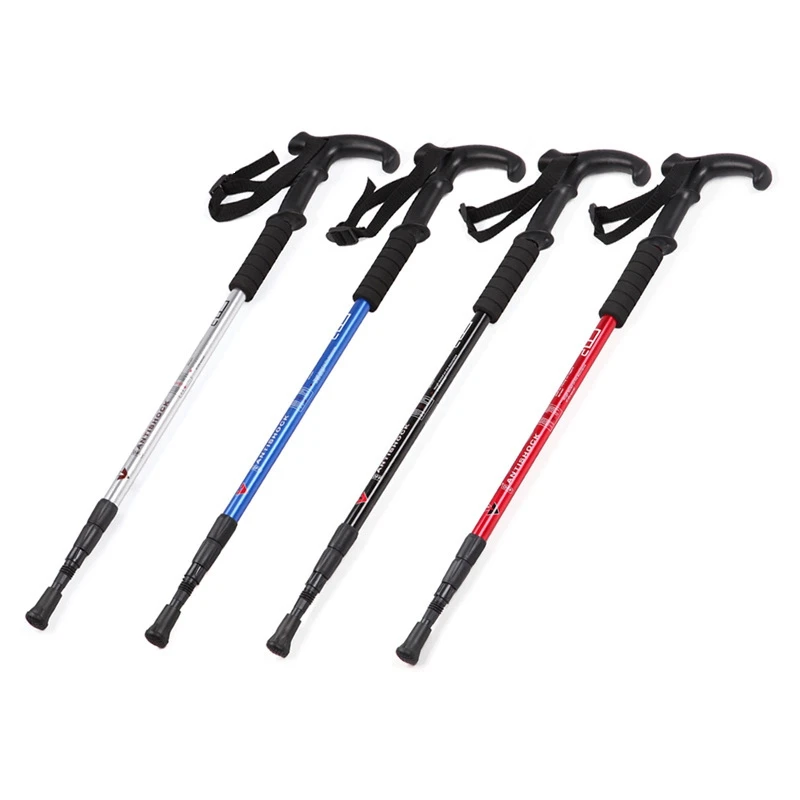The Ultimate Guide to Choosing the Perfect Hiking Poles

When it comes to outdoor adventures, having the right gear can make all the difference in your hiking experience. And one essential tool that often goes overlooked is the humble but mighty hiking pole, also known as a walking stick. These sturdy companions can provide stability, reduce strain on your joints, and even help you maintain your balance on challenging terrains. Whether you're a seasoned hiker or just starting to explore the great outdoors, choosing the perfect hiking poles is a decision that should not be taken lightly. In hiking pole nz , we'll walk you through all the factors to consider, so you can find the ideal set of hiking poles to accompany you on your next adventure. So, let's dive in and discover everything you need to know about selecting the right hiking poles!
1. Types of Hiking Poles
When it comes to choosing the perfect hiking poles, it's important to understand the different types available. There are mainly two types of hiking poles: adjustable and fixed-length.
Adjustable hiking poles are designed to give you flexibility in terms of length. These poles usually feature telescopic sections that allow you to easily adjust the height. This is beneficial when hiking on different terrains or when you're sharing the poles with others who have different height requirements. By adjusting the length, you can find the most comfortable position and achieve optimal stability during your hikes.
On the other hand, fixed-length hiking poles are set at a specific length and cannot be adjusted. They are generally lighter and more durable than adjustable poles since they don't have complex mechanisms. Fixed-length poles are a great choice if you know your preferred length and don't require frequent adjustments. They are also popular among hikers who prioritize simplicity and weight savings.
Each type of hiking pole has its own advantages and considerations. It's essential to consider your personal preferences, hiking style, and the terrain you'll be exploring to determine which type of walking sticks will best suit your needs.
2. Factors to Consider When Choosing Hiking Poles
When selecting the right hiking poles, it is important to consider various factors to ensure a comfortable and enjoyable hiking experience. Here are three key aspects to keep in mind:
Material: The material of the hiking poles plays a crucial role in determining their durability and weight. Most hiking poles are made of either aluminum or carbon fiber. Aluminum poles are known for their strength and affordability, making them a popular choice for hikers. On the other hand, carbon fiber poles are lightweight and provide excellent shock absorption, ideal for those seeking maximum comfort. Consider your specific needs and preferences when deciding between the two materials.
Adjustability: Opting for hiking poles with adjustable lengths is highly recommended, as it allows for customization based on the terrain and your height. Adjustable poles also offer flexibility when it comes to sharing or lending them to others. Look for poles with reliable locking mechanisms that securely hold the desired length, providing stability and support while hiking.
Grip and Straps: The grip of the hiking poles should be comfortable and ergonomic to prevent hand fatigue and blisters. Cork, foam, and rubber are commonly used materials for pole grips, each with its own advantages. Cork grips offer excellent moisture-wicking properties and contour to the shape of your hand over time. Foam grips provide a softer feel and added insulation against cold weather. Rubber grips offer a firm hold and are particularly useful in wet conditions. Additionally, adjustable straps help to distribute the weight and minimize strain on your wrists. Ensure the straps are adjustable, padded, and easy to fasten and release.

By considering these factors - material, adjustability, and grip/straps - you can confidently choose hiking poles that suit your individual needs and enhance your hiking adventures.
3. Tips for Using Hiking Poles Effectively
Adjusting the Height: To maximize the benefits of walking sticks, it is crucial to adjust their height to suit your body and the terrain. Begin by holding the pole upside down, with the grip on the ground, and adjusting the length until your elbow forms a 90-degree angle. This ensures that the poles provide adequate support and stability during your hike. Remember to adjust the height accordingly when ascending or descending slopes for optimal effectiveness.
Maintaining Proper Grip: Maintaining a secure grip on your hiking poles is essential for their effective use. Hold the grip firmly but not too tightly, allowing for flexibility and ease of movement. Adjust the straps so that they provide support without restricting your hand movements. By holding the poles correctly, you will be able to distribute your weight evenly and improve your balance while traversing challenging terrains.
Establishing a Rhythm: Establishing a steady rhythm with your walking sticks can greatly enhance your hiking experience. Begin by planting one pole slightly ahead and diagonally of the opposite foot, then repeat the motion on the other side. This rhythmic pattern will not only help propel you forward but also provide stability and reduce impact on your joints. By using hiking poles effectively, you can maintain a consistent pace and stride, allowing you to conquer longer distances and more challenging trails with ease.
Remember, practice makes perfect, so take the time to familiarize yourself with these tips and experiment to find the technique that works best for you. With the right hiking poles and effective usage, you can elevate your hiking experience, minimize fatigue, and enjoy the great outdoors to the fullest.
